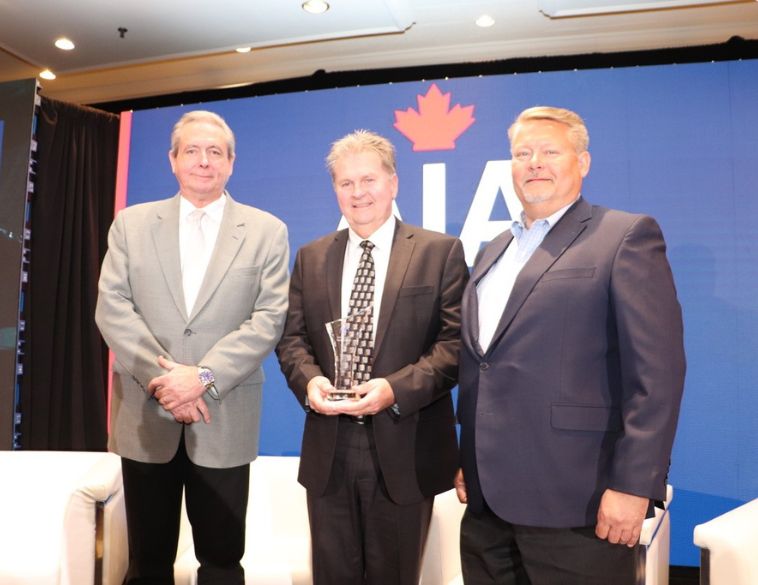Branding, communication and community are essential cornerstones for a successful aftermarket business says this dynamic entrepreneur and store owner from Quebec.
On December 13, the Automotive Industries Association of Canada hosted its latest Curbside Chat podcast, featuring Elisabeth Lambert, Vice President and General Manager, Piece’s d’Auto Joliette in Joliette, Quebec.
During the interview, conducted by AIA Chair Bob Jaworski, Lambert revealed that she got into the automotive aftermarket almost by accident. She worked at an auto parts store part-time while she was studying marketing.
Her mother who also worked there at the time, decided to retire from the business and when the person hired to replace her didn’t pan out, Lambert found herself in the position of being offered the job, even though it wasn’t the direction she had planned to go. “I really liked the company and the people who worked there,” she said.
Greater responsibility
“One thing led to another and more responsibility and here I am, 11 years later; owning the store, really being part of the company and loving it every day.”
The road to store ownership included a willingness to try different roles, including those of accounting and controller for the business, as well as marketing and management. In taking on these tasks, Lambert really gained an understanding in terms of what is required to successfully run an auto parts operation as well as honing her own entrepreneurial skills.
Lambert came in contact with AIA through the AWAKE Mentorship Program and getting to know more about the association and the initiatives and programs available, it really helped her reach the next level as an entrepreneur, manager and business owner in the aftermarket.
Lambert said the importance of programs like AWAKE cannot be underestimated, particularly as the aftermarket looks for talented young people who will become the leaders and industry innovators of tomorrow. That’s why she said, it is so critical to show students the benefits and rewards of a career in the automotive aftermarket.
Moving onto current topics, supply challenges continue to impact the automotive aftermarket as they do for many other sectors of the economy. The COVID-19 pandemic has caused a great deal of disruption and one of the most pivotal is the fact that changes and challenges are happening faster than ever before. Lambert said she finds this a really motivating aspect of the business and looks forward to finding new ways to solve problems.
She also emphasized it was important to understand that while challenges will always be there, the nature of them tends to change, so what was a big obstacle 10 years ago might not be today, and the obstacles facing the industry today could well be replaced by new and different ones in the months and years ahead.
Being prepared
Regarding current parts shortages, and question put forward by AIA President JF Champagne, Lambert said that it was important for aftermarket parts locations to be prepared when clients call. For example, if a customer is requesting a specific part, the store needs to know whether it has that component available and is able to deliver to the client as quickly as possible.
“We are working every day in meeting clients’ needs,” she said, identifying where gaps exist in the supply chain and looking for effective ways in which to fill them. And a big part of making that work, she said, is creating and nurturing strong relationships between suppliers. Doing so enables aftermarket businesses in each sector to stay strong and resilient, particularly during times of crisis.
Another key issue facing many business owners at present is a shortage of qualified staff. The pandemic has led to what some have termed “the Great Resignation,” with too many positions and not enough applicants to fill them. In the aftermarket, the situation is further exacerbated by a growing number of people retiring after long careers in the industry. Lambert said that getting out there and talking to young people is more critical today than ever. “We really need to meet students, to talk with them and really show them we are there and there are great opportunities available in this industry.”
The importance of branding
Jaworski also asked about Lambert’s background in marketing and how that has helped in terms of business operations. She said that strong, consistent branding has been a big focus, from renovations of the premises, to staff uniforms and vehicles outfitted in the company livery. “It’s really about sending a message that we are here and we’re moving forward,” said Lambert.
She stressed that it was crucially important that you are sending the right message out to your customers and that effective branding and marketing plays a key part, though sometimes it can be taken for granted and neglected with obvious consequences.
Lambert also stressed that a business is only as successful as the community around it, which is why it’s so important to give back and participate. “It’s really important to take time [to get involved]. We get so much from our industry and our communities,” she said, “so it is important to get involved [and give back] so that others can benefit.”
By being visible and in her case, getting involved with organizations such as the Chamber of Commerce, it really helps raise visibility of the business and its management team in the community, which can not only solidify its reputation but even lead to new clients and business opportunities.
To view the recording of this AIA Curbside Chat, please visit: https://www.youtube.com/watch?v=ydVi-kCrv0A



